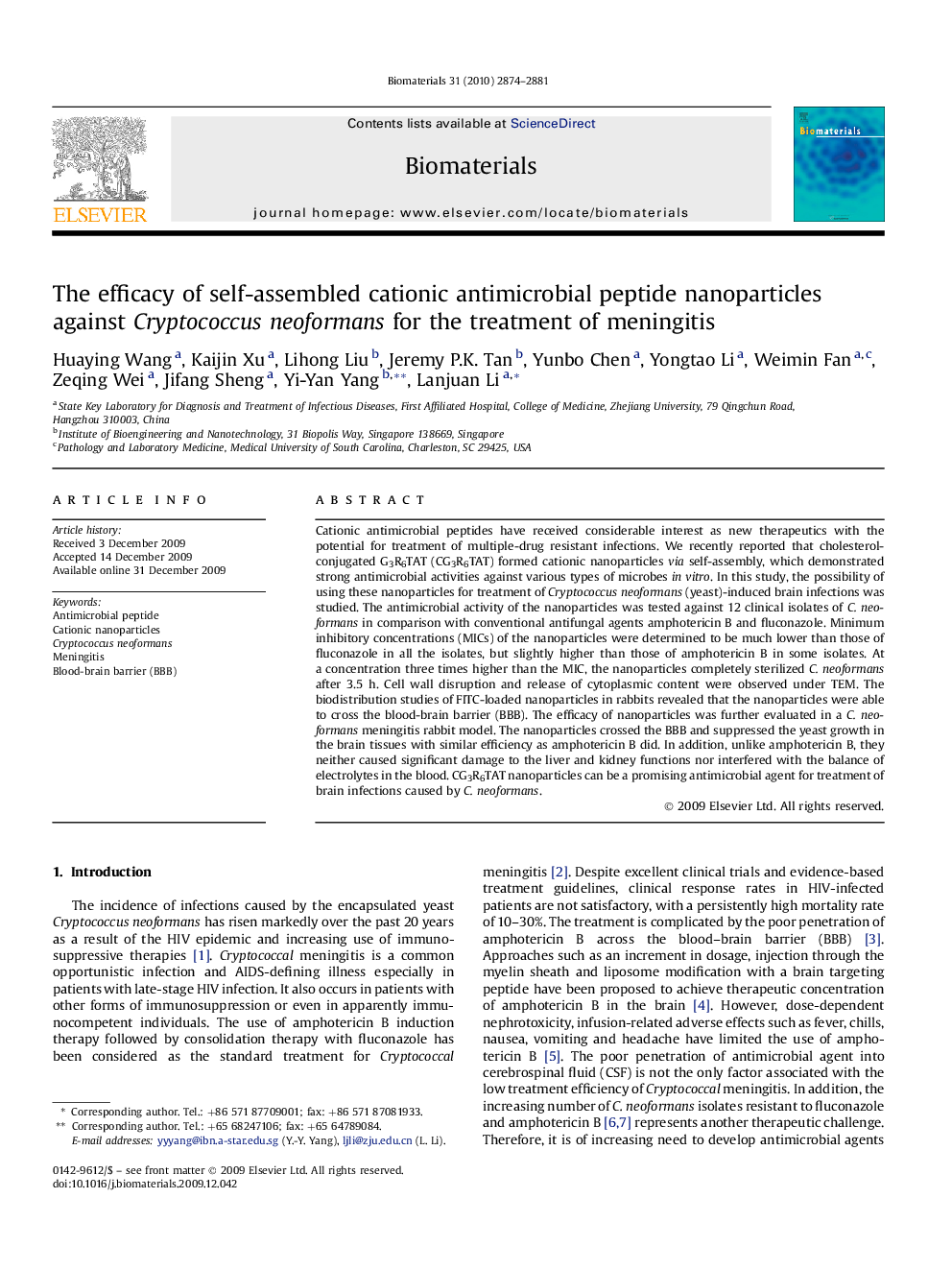| Article ID | Journal | Published Year | Pages | File Type |
|---|---|---|---|---|
| 8575 | Biomaterials | 2010 | 8 Pages |
Cationic antimicrobial peptides have received considerable interest as new therapeutics with the potential for treatment of multiple-drug resistant infections. We recently reported that cholesterol-conjugated G3R6TAT (CG3R6TAT) formed cationic nanoparticles via self-assembly, which demonstrated strong antimicrobial activities against various types of microbes in vitro. In this study, the possibility of using these nanoparticles for treatment of Cryptococcus neoformans (yeast)-induced brain infections was studied. The antimicrobial activity of the nanoparticles was tested against 12 clinical isolates of C. neoformans in comparison with conventional antifungal agents amphotericin B and fluconazole. Minimum inhibitory concentrations (MICs) of the nanoparticles were determined to be much lower than those of fluconazole in all the isolates, but slightly higher than those of amphotericin B in some isolates. At a concentration three times higher than the MIC, the nanoparticles completely sterilized C. neoformans after 3.5 h. Cell wall disruption and release of cytoplasmic content were observed under TEM. The biodistribution studies of FITC-loaded nanoparticles in rabbits revealed that the nanoparticles were able to cross the blood-brain barrier (BBB). The efficacy of nanoparticles was further evaluated in a C. neoformans meningitis rabbit model. The nanoparticles crossed the BBB and suppressed the yeast growth in the brain tissues with similar efficiency as amphotericin B did. In addition, unlike amphotericin B, they neither caused significant damage to the liver and kidney functions nor interfered with the balance of electrolytes in the blood. CG3R6TAT nanoparticles can be a promising antimicrobial agent for treatment of brain infections caused by C. neoformans.
